On April 21, 2024, Comet 12P/Pons-Brooks, commonly referred to as the ‘Devil Comet,’ will reach its perihelion, the closest point to the Sun, at a distance of 0.785 astronomical units (117 million km / 73 million miles). This celestial event will allow the comet to be visible just after sunset within the Taurus constellation, marking its peak visibility period.
Comet 12P/Pons-Brooks, also known as the ‘Devil Comet,’ is set for its closest approach to the Sun on April 21, 2024, when it will be approximately 117 million km (73 million miles) away. This event coincides with its peak visibility, making it a notable astronomical event of the year.
The comet will be best observed just after sunset, positioned in the Taurus constellation. It is predicted that in areas with minimal light pollution, the comet may be visible to the naked eye. However, for optimal viewing, astronomers recommend the use of binoculars or a small telescope.
The close approach of Comet 12P to Earth will occur on June 2, 2024, when it will be at a distance of 1.55 AU (232 million km / 144 million miles). Despite its distance, the comet’s distinctive features, such as its reported green tinge caused by diatomic carbon and its historical visibility dating back to its discovery in 1812, make it a subject of interest for both amateur and professional astronomers.
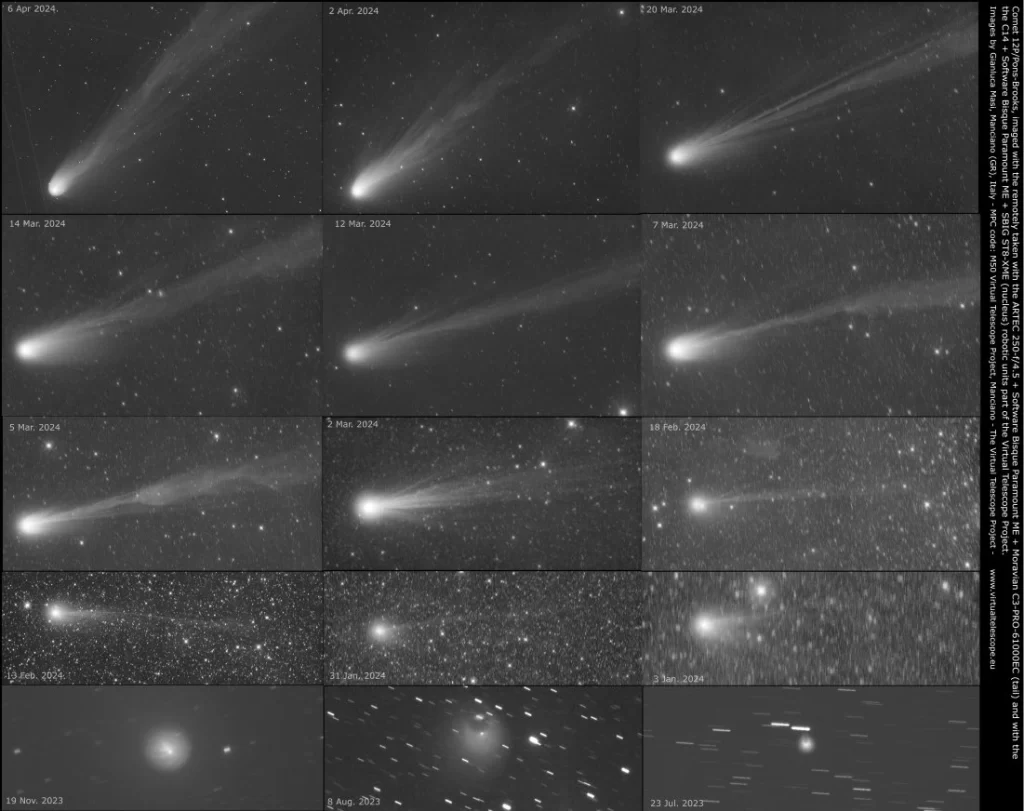
The comet, measuring 34 km (21 miles) in diameter, has been a periodic visitor to our skies, with an orbital period of approximately 71 years. This places it in the category of “Halley-type” comets, which are comets with an orbital period between 20 and 200 years.
Astronomers like Brad Tucker and Rebecca Allen highlight the unique characteristics of Comet 12P/Pons-Brooks, noting its cryovolcanic activity and the eruptions that can sometimes increase its brightness suddenly. Such features not only enhance its visibility but also contribute to the ongoing study of cometary behavior and its impact on meteor showers such as the December κ Draconids and the northern June Aquilids.
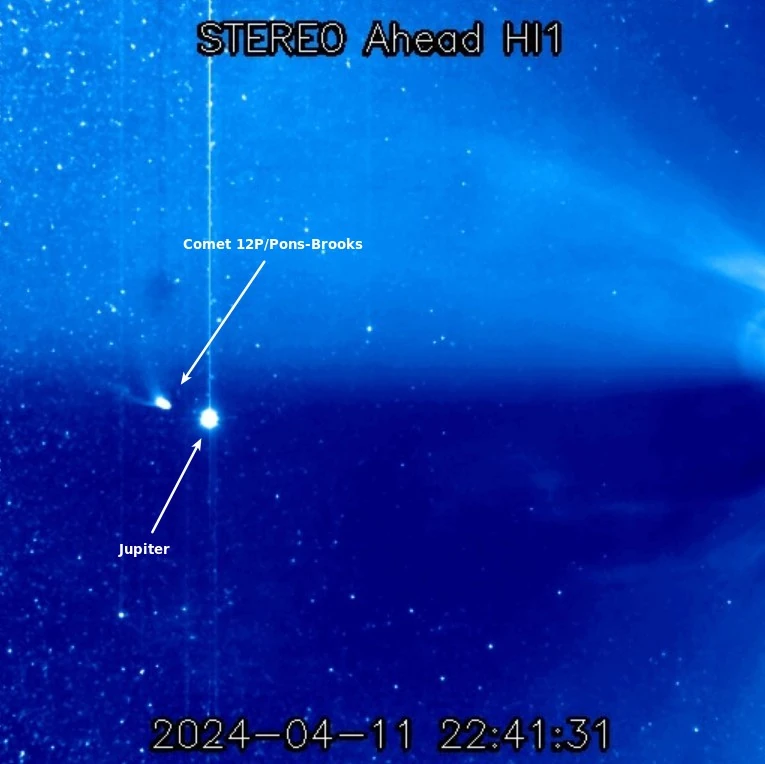

As the comet approaches its perihelion, the increase in solar radiation heats its nucleus, causing the sublimation of ices into gas and dust, which then form the comet’s glowing coma and tail. This process is expected to make the comet particularly bright around April 22, 2024, although the full moon may pose challenges to its visibility.
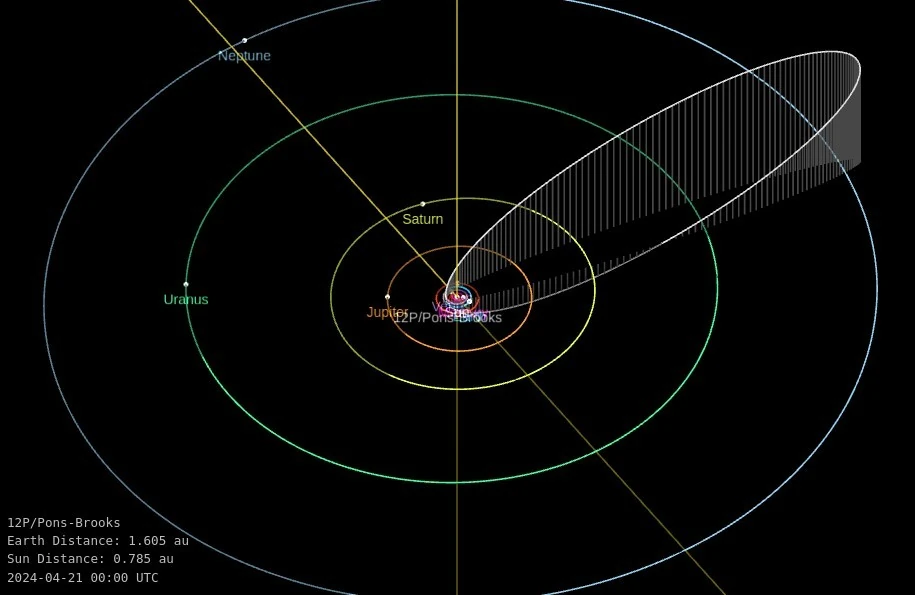

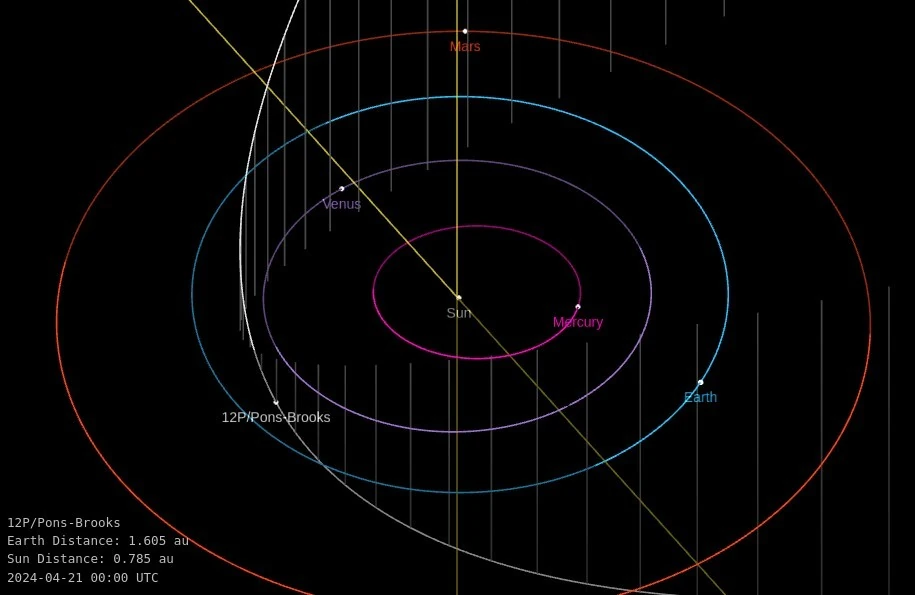

Observers, especially in northern latitudes, are advised to look towards the western sky shortly after sunset, where the comet will be positioned close to the horizon, making its observation a rewarding challenge for skywatchers.
To enhance the viewing experience, it is advisable to use binoculars or a small telescope. These tools can help distinguish the comet from the twilight glow and allow viewers to see its distinctive green tinge and elongated tail more clearly.
Given the comet’s low position near the horizon, selecting an optimal viewing location is crucial. Observers should seek out high vantage points with minimal obstructions such as buildings or trees. Areas free from urban light pollution will significantly improve visibility. Dark skies are particularly important as they allow the comet’s features to stand out against the backdrop of space.
The brightness of the full moon on April 22 may interfere with optimal comet viewing. Therefore, it is recommended to plan observations for the days following this phase, particularly around April 25 and later, when the moon’s brightness diminishes, and the comet remains relatively bright and higher in the sky.
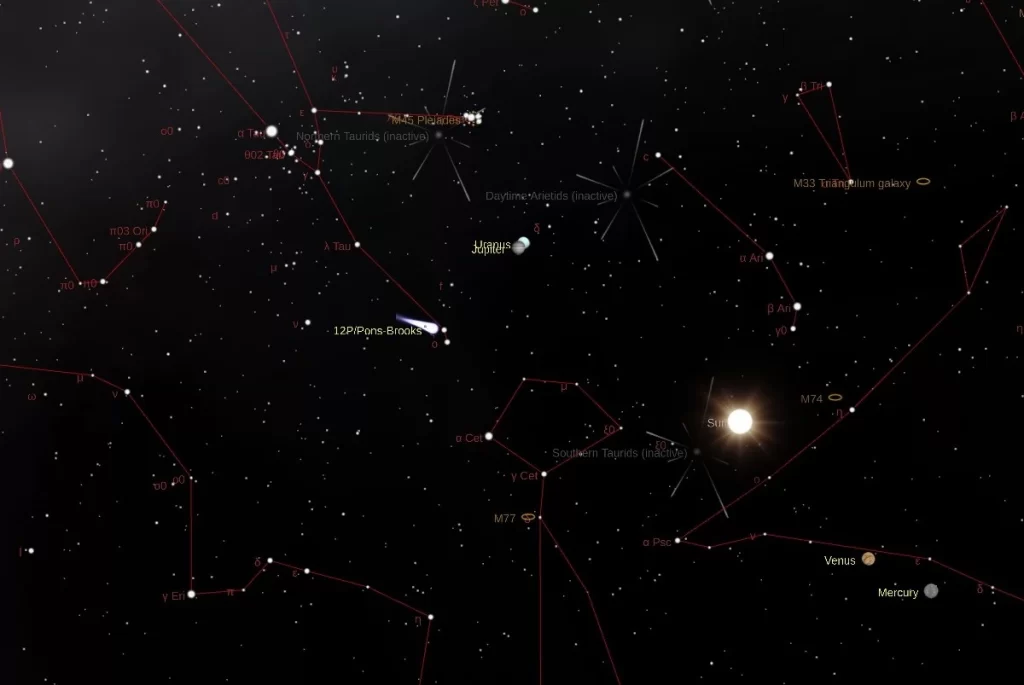

Comet 12P/Pons-Brooks was nicknamed the Devil Comet because eruptions from its nucleus can make it look like it has two horns.
Featured image: Comet 12P/Pons–Brooks on March 7, 2024. Credit: Nielander
Upcoming nova explosion in T CrB star system offers rare night sky event
Friday, March 22, 2024
Rare ‘recurrent nova’ visible to unaided eye in the constellation Ophiuchus
Tuesday, August 10, 2021
Comet C/2020 F8 (SWAN) rapidly brightening, now visible to naked eye
Thursday, April 30, 2020
Tracking down the comets – C/2020 F8 (SWAN), C/2019 Y4 (ATLAS) and C/2017 T2 (PanSTARRS)
Friday, April 17, 2020
First Supermoon of the year – live show on February 8
Friday, February 7, 2020
International Astronomical Union concerned about satellite constellations
Wednesday, June 5, 2019
New phenomenon discovered in the night sky
Friday, April 21, 2017